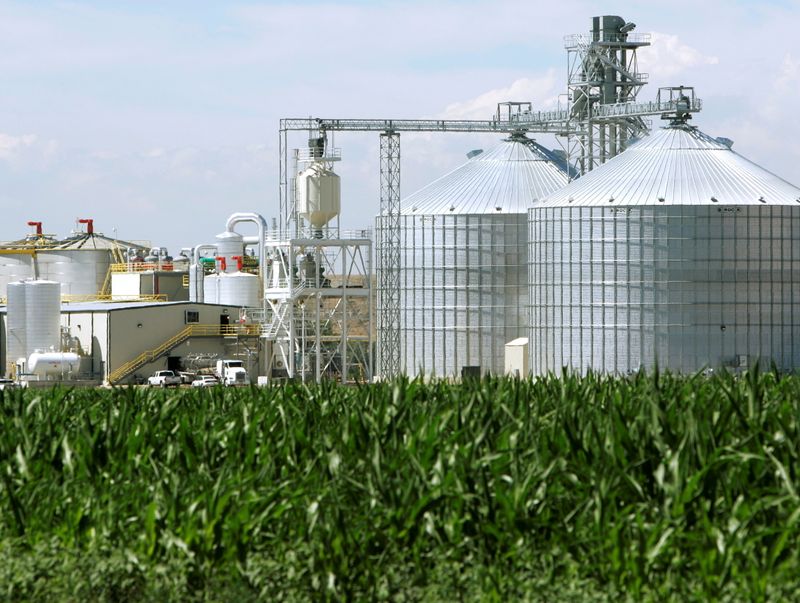Giant pipeline in U.S. Midwest tests future of carbon capture By

© Reuters. FILE PHOTO: An ethanol plant with its giant corn silos next to a cornfield in Windsor, Colorado July 7, 2006./File Photo
2/2
By Leah Douglas
(Reuters) – Dan Tronchetti received a letter in August that alarmed him: Summit Carbon Solutions, a company he’d never heard of, wanted his permission to conduct survey work for a 2,000-mile pipeline it planned to route through his Iowa corn and soybean fields.
The project, dubbed the Midwest Carbon Express, had ambitions to become the world’s largest carbon dioxide pipeline, moving climate-warming greenhouse gases from Midwest biofuels plants to North Dakota for permanent storage underground.
But Tronchetti’s first concern was for his livelihood. “It would go more than half a mile through prime farmland,” he said.
The 65-year-old is among dozens of landowners along the route who are refusing to cede their property to the project, according to Reuters interviews with five landowners, four community groups organizing opposition, several academics and industry sources plus a review of filings with state regulators.
The impasse could escalate into potential court battles if Summit tries to seize the land by claiming eminent domain. Such legal fights contributed to the cancellation of the Keystone XL oil pipeline this year.
The outcome of the dispute poses huge stakes for Summit’s $4.5 billion project, and for the Midwest ethanol producers it would serve who are hoping to wipe away their carbon footprints and burnish their green credentials.
It also represents what could be the biggest test yet for the carbon capture and storage (CCS) industry, which has struggled for years but which advocates say could become a powerful tool in the global fight against climate change.
Underground geological formations in the United States have the potential to store 2.6 trillion tons of planet-warming CO2, enough to cover all of America’s historical emissions and those to come for centuries, according to the Department of Energy.
But there are open questions about whether CCS can ever fill them. Despite billions of dollars of public investment over the past decade, the technology remains relatively untested.
The United States boasts just 12 operational commercial CCS facilities that together have an annual capacity to store away 19.64 million tons of carbon, about 0.4% of national emissions.
Many other projects have been proposed but have either failed to reach startup or have been suspended because of financial or operational issues, including the $1 billion Petra Nova plant in Texas last year.
Health issues are also a concern. A 2020 liquid CO2 pipeline rupture in Yazoo County, Mississippi, for example, sickened dozens of people.
Jerald Schnoor, a professor at the University of Iowa’s engineering school and former chair of the Iowa Climate Change Advisory Council, said his “high hopes” for CCS had flagged in recent years after the string of project failures.
But he added that ethanol plants…
Read More: Giant pipeline in U.S. Midwest tests future of carbon capture By
